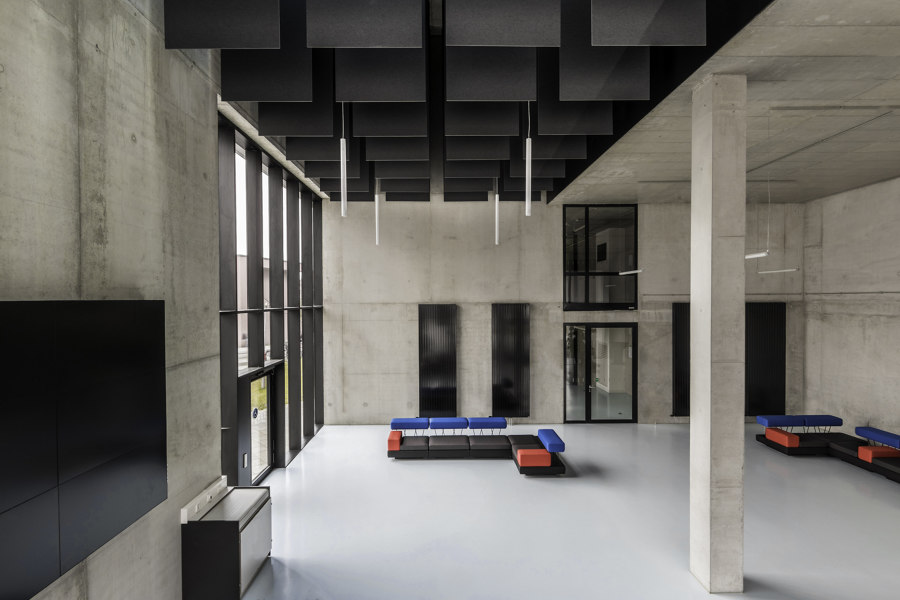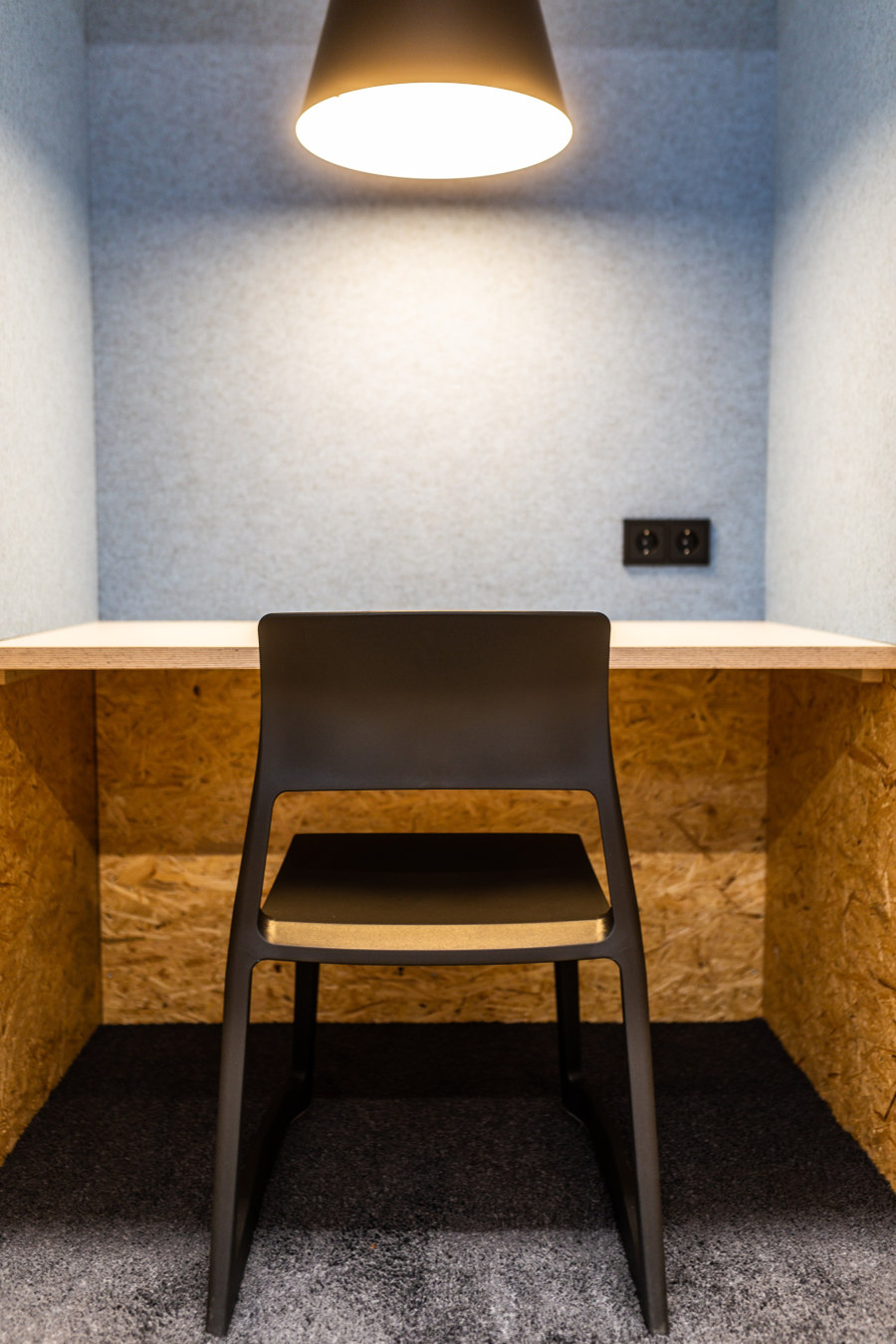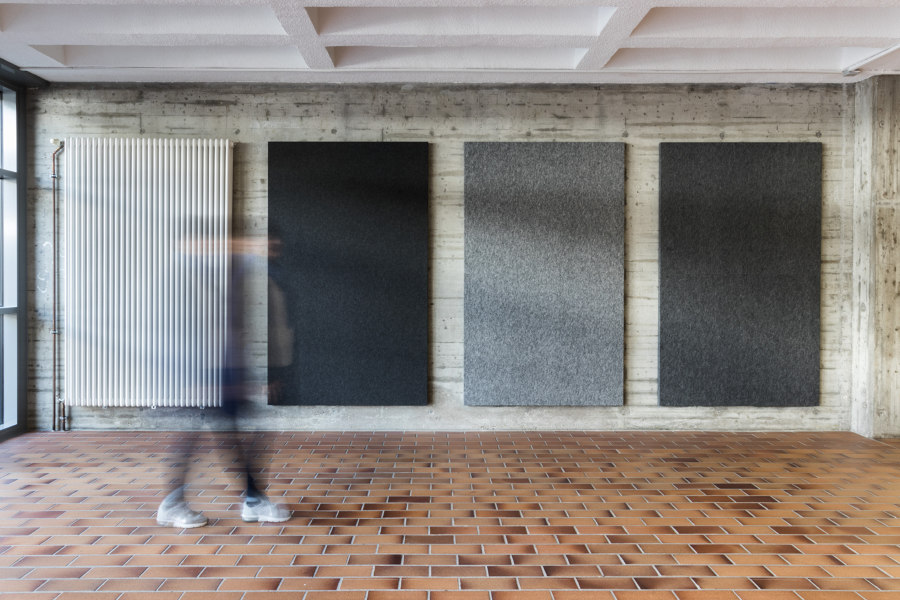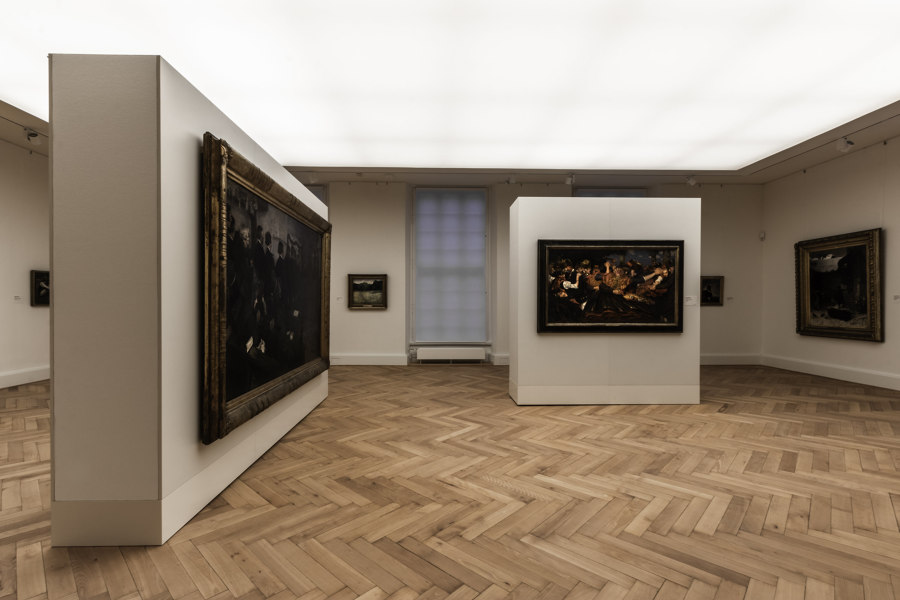M&K Filze: making its presence felt
Brand story by Gerrit Terstiege
Spalt, Allemagne
19.11.19
Bavaria's M&K Filze has learnt a thing or two about wool in its 150-year history, not least that it can be dangerous to follow the flock. No surprise then that they’ve developed a new material in-house: Nitona, a felt product that’s ideal for the acoustic optimisation of large spaces.
The background noise in a restaurant often determines how well guests feel. Here M&K Filze offers tailor-made solutions – depending on the size of the room and the situation
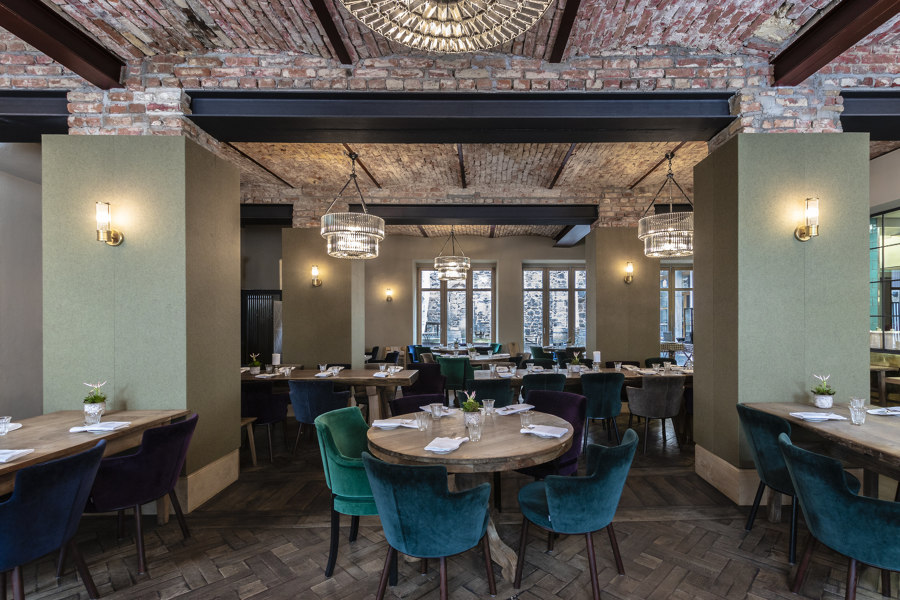
The background noise in a restaurant often determines how well guests feel. Here M&K Filze offers tailor-made solutions – depending on the size of the room and the situation
×When it comes to felt, many people still immediately think of the artist Josef Beuys, who used this valuable material in numerous of his creations and installations. Beuys deliberately chose felt as an artistic material because its properties symbolised heat and energy storage. Archaeological finds of wool felt can be dated back to the Neolithic Age and the fact that the fibres of sheep's wool, with their flaky surface, permanently bond under pressure – for example when kneaded, agitated or rolled together – was taken advantage of even back then.
Today, felt continues to offer great design possibilities for a wide variety of functions and applications. M&K Filze GmbH, based in Spalt near Nuremberg, Germany, manufactures a large number of individually tailored products from wool felt, needle felt, needle fleece and fibre composite. Founded as a traditional millinery in 1861, the ‘Moll & Kühnsche Filzfabrik’ has developed over the decades into a globally active supplier of classic wool and needle felts. In 2003, a modern production facility was established in Spalt, where a dedicated team continues the company's 150-year history to this day.
Large rooms, with lots of glass and concrete often creates exciting architectural scenarios, but also problems with sound reverberations. Here, for example, sound-absorbing modules mounted on the ceiling can help to improve the sound in the room
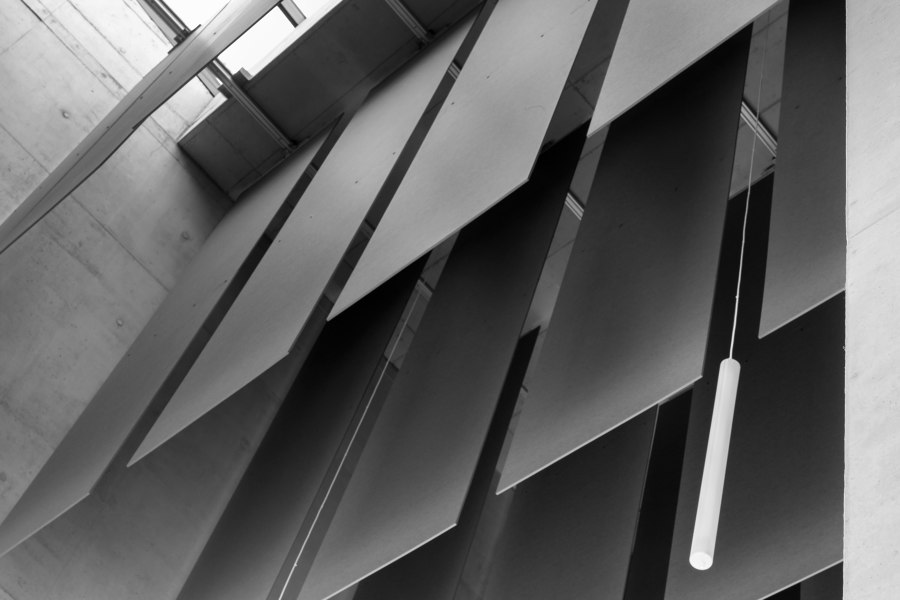
Large rooms, with lots of glass and concrete often creates exciting architectural scenarios, but also problems with sound reverberations. Here, for example, sound-absorbing modules mounted on the ceiling can help to improve the sound in the room
×One product segment comprises the so-called design felts, which are offered in a wide range of colours and can be individually processed according to customers’ wishes: Individual elements can, for example, be cut as free, geometric shapes, with the contour of a leaf, for example, or as letters. As expandable felt modules that can be adapted to the respective room, they can be attached to walls or fixed in a freely suspended position, thus reducing resonance times – or in other words, the echo effect. In addition to this function, M&K's design felts are also eye-catching and can be colour-coordinated with the branding of a company or, in private living rooms, formally adapted to the respective furnishing style.
'Nitona's fibre composite has a pleasant feel and, like the design felts, is produced by M&K in a variety of colours'
Attention architects and interior designers: With their knowledge of the properties of natural wool felt, M&K, has developed a completely new material called Nitona, which is ideal for the acoustic optimisation of large rooms.
Telephone in peace without disturbing others: M&K Filze also has solutions for small rooms. The specially developed Nitona material is ideally suited for the acoustic optimisation of different room sizes. Photos: Planergruppe Licht
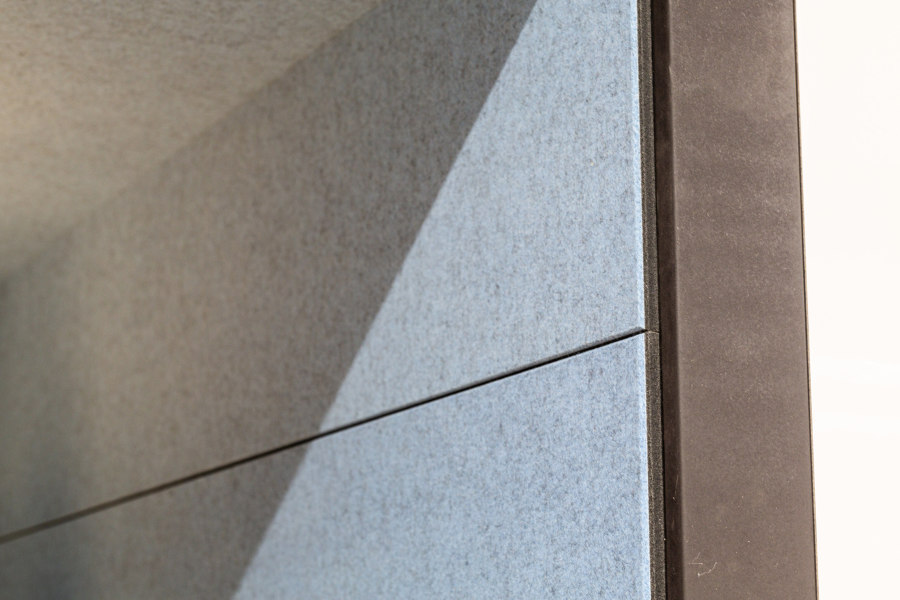
Telephone in peace without disturbing others: M&K Filze also has solutions for small rooms. The specially developed Nitona material is ideally suited for the acoustic optimisation of different room sizes. Photos: Planergruppe Licht
×Architects, in particular, are familiar with the fact that lofts and more generously dimensioned buildings made of concrete and glass often have acoustics with undesired echo effects built in. And depending on how these rooms are used, this can become a serious problem. In conference rooms, restaurants or classrooms, for example, which usually accommodate larger numbers of people, it is particularly important to ensure a strong acoustic performance.
Nitona's fibre composite has a pleasant feel and, like the design felts, is produced by M&K in a variety of colours. The material can be used to clad walls and ceilings, to separate rooms, and to design lighting and furniture thanks to a wide range of processing options. Nitona can be printed, digitally cut and laminated with wool felt – giving designers great freedom to combine acoustic comfort with good design.
Whether panels are mounted on the wall or on the ceiling depends on the respective room situation. The M&K Filze team advises individually and also finds solutions that can become real eye-catchers
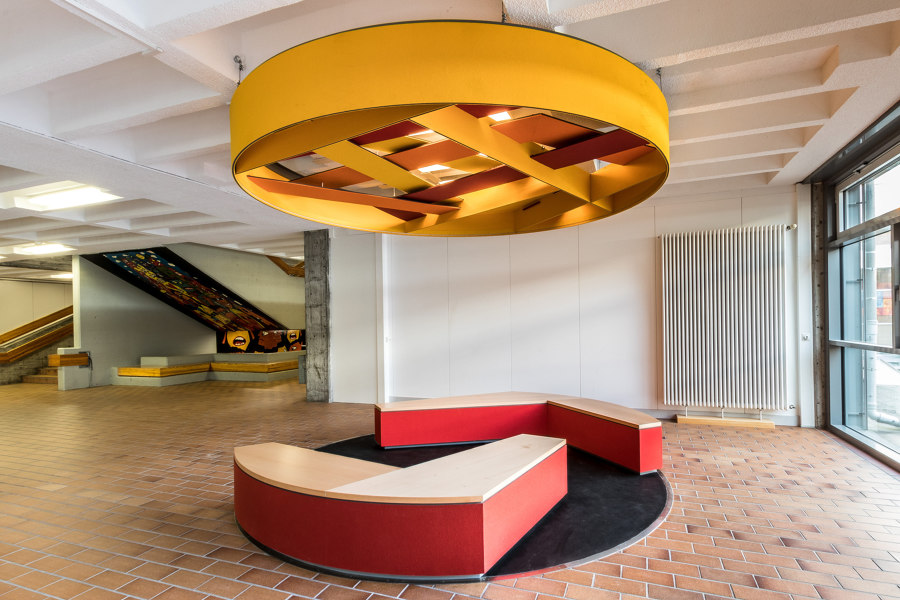
Whether panels are mounted on the wall or on the ceiling depends on the respective room situation. The M&K Filze team advises individually and also finds solutions that can become real eye-catchers
×Numerous case studies on the use of Nitona can be found at www.filzfabrik.de in the ‘Projects’ section – from the aesthetically impressive and visual to the more discreet or almost invisible. The range of project locations is also broad: museum rooms such as that at the University of Marburg or Ratibor Castle in Roth, Bavaria, to the ‘The Table’ restaurant in Hamburg.
Depending on the size and function of a room, architects and interior designers can seek individual advice from M&K, because every spatial situation is different and presents its own challenges. Even for difficult structural constellations – such as round walls or historical cross vaults – sound-absorbing solutions can be found which are convincing from a form point of view and also compatible with the protection of historical monuments.
Even for difficult structural constellations – such as round walls or historical cross vaults – sound absorbing solutions can be found which are formally convincing and compatible with the protection of historical monuments.
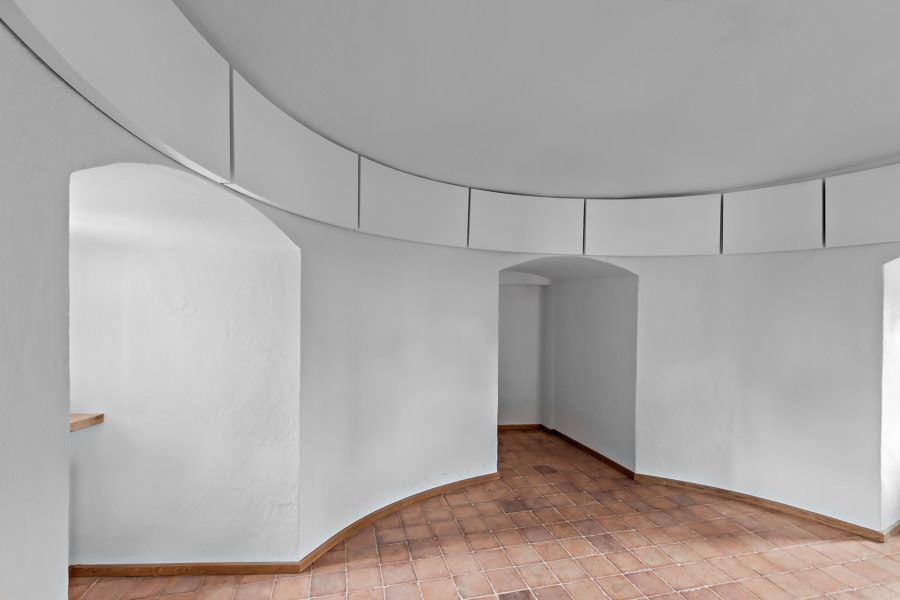
Even for difficult structural constellations – such as round walls or historical cross vaults – sound absorbing solutions can be found which are formally convincing and compatible with the protection of historical monuments.
×Since Nitona consists of polyester fibres, the material is far cheaper than natural wool felt and with a thickness of 10 mm, surprisingly effective. Depending on budget, buildings can be acoustically optimised in stages: this means starting with the initial measures, – which often makes a big impact – and then, in dialogue with M&K, refining and extending the acoustic insulation as required – even years later.
All photos by Steffen Borowski except where otherwise stated
© Architonic


